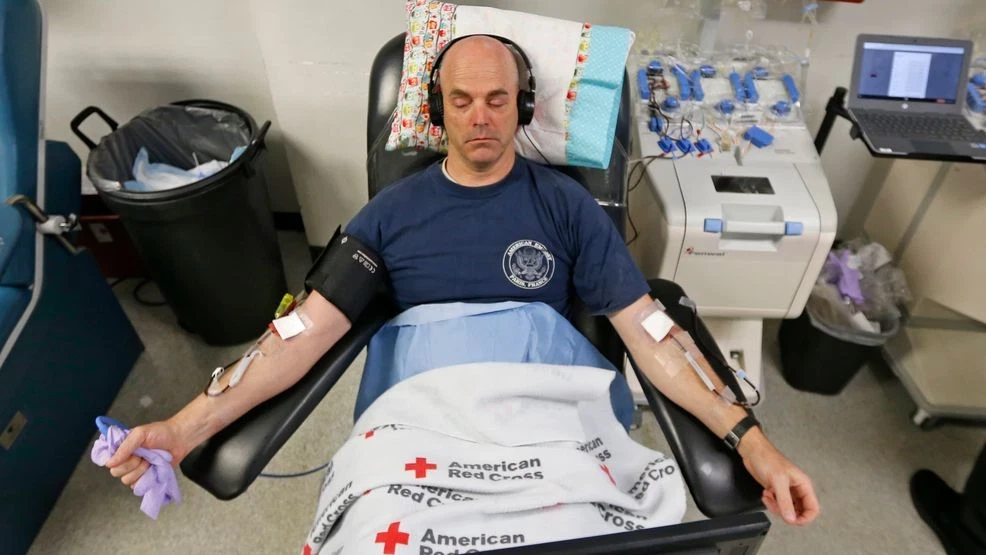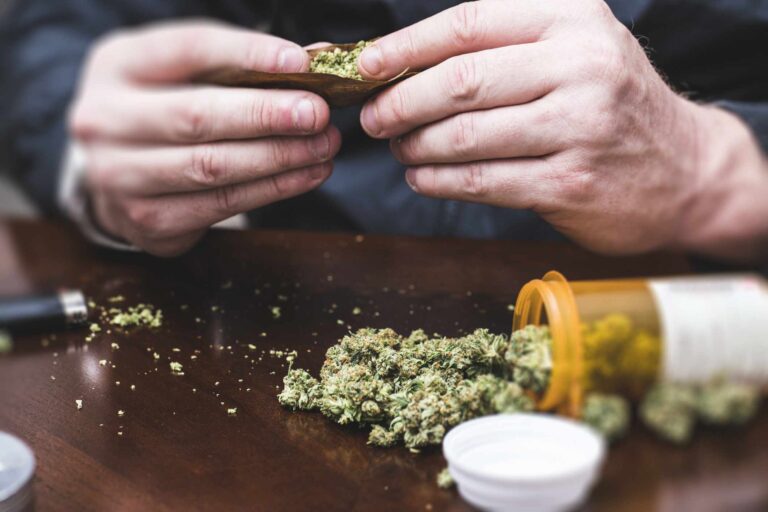
Do you want to help out and make a few bucks? Plasma donation is an excellent way to give back and save lives, and we have a few local centers here in Utah. This guide walks you through everything you need to know to find the best plasma donation center in your area, and how you can figure out which center is best for you.
Why Plasma is Critical for Medical Treatment
Plasma, blood’s pale yellow liquid component, makes up about 55% of total blood volume and is an essential resource in medicine. The primary components of this fluid include water, electrolytes, proteins, hormones, and waste products, and are essential to many bodily functions.
Plasma is essential for countless treatments, for hemophiliacs, burns, liver disease, and many immune deficiencies. For example, there are over 70 different conditions treated with plasma-derived products, demonstrating how essential regular plasma donations are in keeping effective, life-saving treatments on the shelves. Moreover, plasma having immunoglobulins and clotting factors, makes it irreplaceable for those patients who need immunotherapy or operation.
Hospitals always require a constant volume of plasma, and donors are always needed. We can see that by realizing the significance of plasma, we can easily establish why plasma donation is not only a charitable effort but a vital aspect of health care system.
Personal Stories and Statistics: How Donating Plasma Can Save a Life
Millions of lives depend on plasma-derived therapies each year. There are plenty of personal stories here, all showing how plasma donation can have a significant impact.
For example, people with hemophilia often share stories of how they cope from day to day without effective treatment. John was diagnosed with hemophilia at birth which was the start of a life full of difficulties with episodes of bleeding. His life improved significantly once he started regular infusions of plasma-derived clotting factor, leading a more active and fulfilling life.
The Plasma Protein Therapeutics Association, an estimated 1.5 million U.S. patients rely on plasma-derived therapies. The also reminded is that up to three lives can be save for every live donation if recovered plasma is applied logistically and correctly reinforcing the enormity and the importance of what every donor can do.
A Comprehensive Explanation of the Science Related to Plasma
As much as plasma donation is a procedure, it is also a poised amalgamation of biology and technology. Plasma has many proteins, such as clotting factors, albumin, and immunoglobulins, each with a designated role in the body.
For instance, albumin plays an essential role in maintaining oncotic pressure, preventing the leakage of fluid in the tissues that would cause swelling. These are immunoglobulins which are important in the immune responses or in overcoming infections in the body.
This is done through a process called plasmapheresis, in which a machine separates plasma from other components of the blood, like red cells and platelets, and returns those components to the donor. The technology itself has come a long way and is now safer and more efficient than ever before. A good understanding of this scientific background will not only make a donation process much more valuable, it will also give us insight into how important we, as individuals, are in succeeding with medicine.
How Sick Should Plasma Donation Be a Good Match in Utah
What to Look for When Selecting a Place to Donate
Choosing the best plasma donation center plays a pivotal role in making sure your donation goes smoothly and safely. There are several things to take into account before choosing between the two.
The first consideration is proximity, where you want to be near, since donations are made frequently and may require several trips. And the second is that the reputation of the facility is top; checking for reviews online, getting recommendations, and verifying certifications can give you an idea of how professional the center and care is.
Finally, keep in mind the services they offer; indeed some centers provide free snacks and/or drinks after you finish donating. Lastly, if the center compensates donors, this may also play a role in the final decision.
Creating an atmosphere of peace and respect comes first; therefore it is always best to visit locally so you can determine the professionalism of the staff as well as the cleanliness of the facility.
Confirming Credentials and Finding Trusted Facilities
In plasma donation, being at a licensed and accredited center is a must. Step 1 in credential verification is looking for compliance from regulatory authorities like the Food and Drug Administration (FDA) and the American Association of Blood Banks (AABB).
These organizations regulate the safety and quality standards that plasma collection centers provide. State regulations, the Utah Department of Health offers some good guidance on this, sometimes fill in these gaps so it’s also good to see whether local facilities meet state requirements.
Also, you may request the center to show you their certifications and accreditations to help reassure you about the legitimacy and standards of operation in that facility.
Check the local health department website, the donor forum and other online platform outlets that connect people offering reviews after the donation to get tips on the best places to go for plasma donation. Consider narrowing your search by typing Utah Plasma Donation Center into your favorite review platform.
An Overview of How Plasma Donation Works
Your First Experience Donating: A Step-by-Step Guide
So to all first-time donors, learning about the process is the first step to overcoming the fear associated with plasma donation. The process usually starts with an online pre-screening questionnaire, which determines potential participation based on health history and other lifestyle factors.
Once potential donors have confirmed that they qualify, they log an appointment with the center set for them. Be adequately well hydrated and eat lightly prior to your donation day to decrease the risk of feeling light headed.
Once you arrive, the staff will give you a health assessment by taking your vitals and checking your hemoglobin levels to make sure you are healthy enough to donate. When you actually give the plasma, a needle will go into a vein in one of your arms; your blood drains into a machine that separates the plasma from the other blood stuff.
This whole process takes around 90 minutes, and you will often be encouraged to do light things, like read or go on your phone. You’ll then be wheeled into a recovery area for refreshments to replenish your strength after the donation.
Knowledge of these steps also clears out the confusion on donation and preps donors for a successful visit to a Utah plasma donation center.
Myths and Facts About Plasma Donation
Myths surrounding plasma donation can deter potential donors from going through the process to do so. Another common misconception is that donating plasma can have negative health consequences or cause a loss of essential fluids.
In truth, though, the plasma donation process is safe and regulated and the body fully replaces plasma in 24-48 hours.
Another myth is around the subject of compensation for a donor. Many believe donating is made less altruistic if compensation is provided for the donation. Ultimately, compensation is a reward, and so it will bring more people into the fold, and better provide plasma to those who need it.
Then there is the myth that only certain groups of people are suitable to donate — in reality most healthy adults aged 18 to 69 can donate if they meet certain health criteria.
It is crucial to dispel these myths through outreach and education of its impact and safety, as this misinformation will keep good people from wanting to contribute.
After Donation Care: Suggestions for a Seamless Recovery
You may expect post-donation care requiring your special attention as it ensures a smooth recovery following your plasma donation. Some people feel mild fatigue or light-headedness right after.
In order to alleviate these symptoms, making sure to stay hydrated and eating vitamin-rich and iron-rich foods such as lean meats, beans and leafy green vegetables is important.
You will want to keep your activities light and avoid heavy lifting for today; allow your body to balance itself out.
There are even centers that offer aftercare, and check for side effects such as bruising at the injection site, as well. In case of continued uneasiness, you should consult your doctor.
Moreover, keeping track of your own health after the donation gives you an idea of how your body reacts, which could help you in the subsequent donations and opposes a conscious donation habit in the future.
Acceptance of the post-donation experience is essential → Treat a good donor → A healthy relationship with donation
Take Part: Join the Plasma Community in Utah
Enjoining Local Support Groups and Advocacy
Becoming a part of the broader plasma community that exists in Utah can further make individual contributions to the cause of plasma donation.
Support groups provide information and emotional guidance, a forum for both donors and recipients to give testimony. Groups such as the Utah Blood and Plasma Donation Advocacy Group raise awareness of the significance of plasma donation, emphasizing its tangible effects on people who benefit from it.
Working with local branches of national organizations can support networking with other advocates and health professionals and allow a greater understanding of the collective information on plasma donation.
By taking part in awareness campaigns and community programs, this improves visibility and helps to foster a culture of giving back, which can lead to increased donation rates and an understanding of the impact of plasma as a life-saving medication.
Take Part by Volunteering and Fundraising to Increase Awareness of Plasma
Community Service As With Any Role You Might Play, Volunteering In Your Community To Bring Plasma Donation Awareness Can Look Very Different.
Local centers frequently accept volunteers for events such as organizing donor drives, educational seminars, or fundraising efforts.
For example, setting up information booths at community events or schools to counter the myths associated with plasma donation and attract new donors. They can also be vital in fundraising efforts, either to promote an awareness campaign or to expand services in the local area so that they can afford to protect donor health and learning.
With social media, people can launch campaigns to spread the word about the urgent need for plasma and help audiences connect to the message with personal narratives.
Every little contribution you make — whether it is donating your time or resources — plays a big role in creating a strong community that surrounds how plasma is donated, thus increasing donor engagement, thus leading to cures that save lives.
Plasma Donation Trends: What to Expect in the Future
Plasma Donation: Potential Advancements
The future of plasma donation could be very exciting in terms of new technology and practices.
A major trend is in using mobile applications and internet-based platforms to simplify the donation process–making it easier to schedule, track frequency of donation, and to remind donation to the donor.
Emerging plasma screening technologies also have the potential to improve safety and speed by ensuring that donor plasma is safe as quickly as possible.
In addition, the new era of personalized medicine suggests an increasing use of specifically targeted plasma treatments, which increases the constancy of supply in different profiles from donors.
Increased education and awareness campaigns will also lead more people to view plasma donation as a needed, positive step. In short, staying in the know on these trends will contribute to an educated donor and recipient community — one that is better and healthier for it moving forward.
So if you’re ready to make a difference, start with your nearest Utah plasma donation center. Whether you’re a first-time donor or a returning participant, your effort has a powerful impact.







